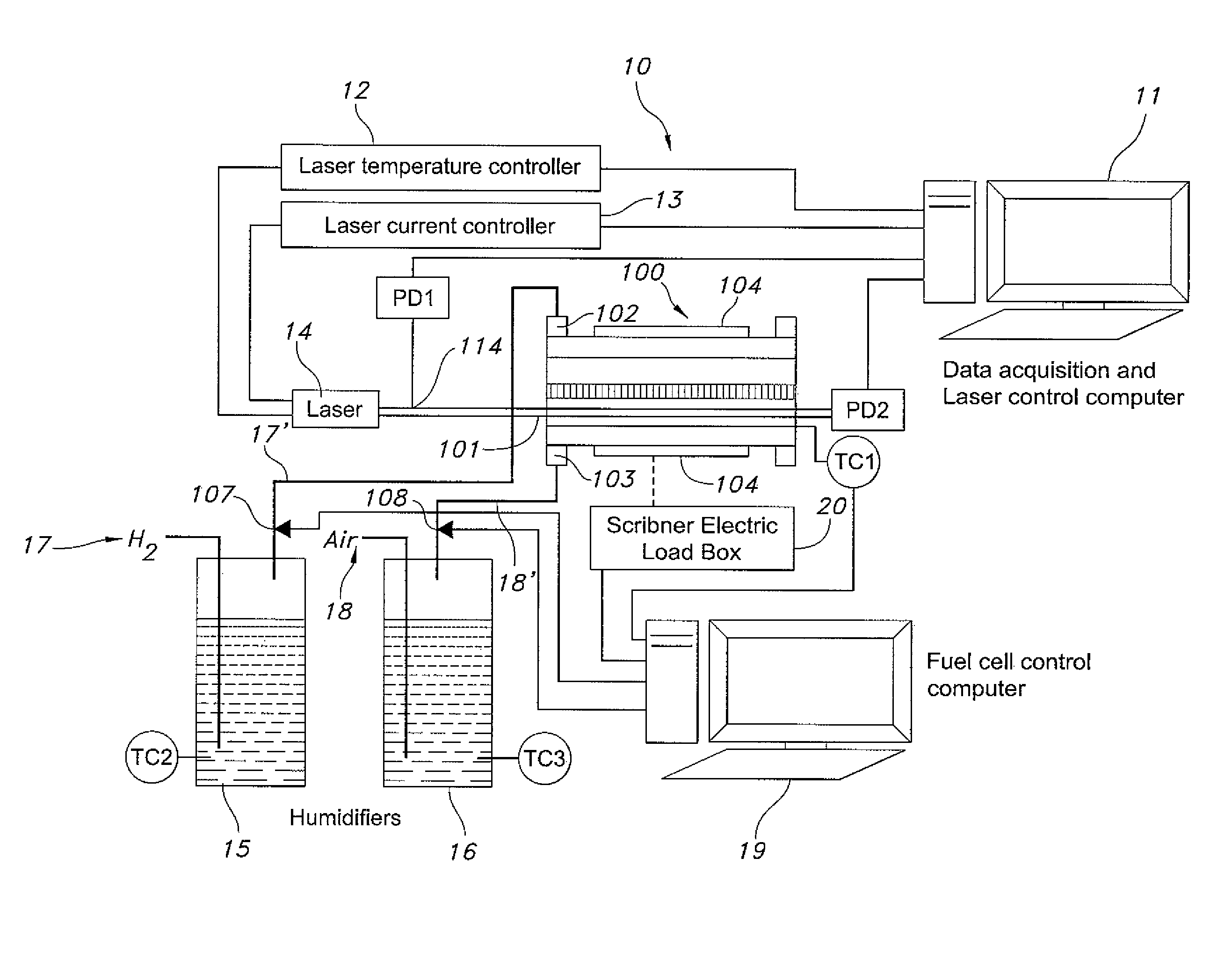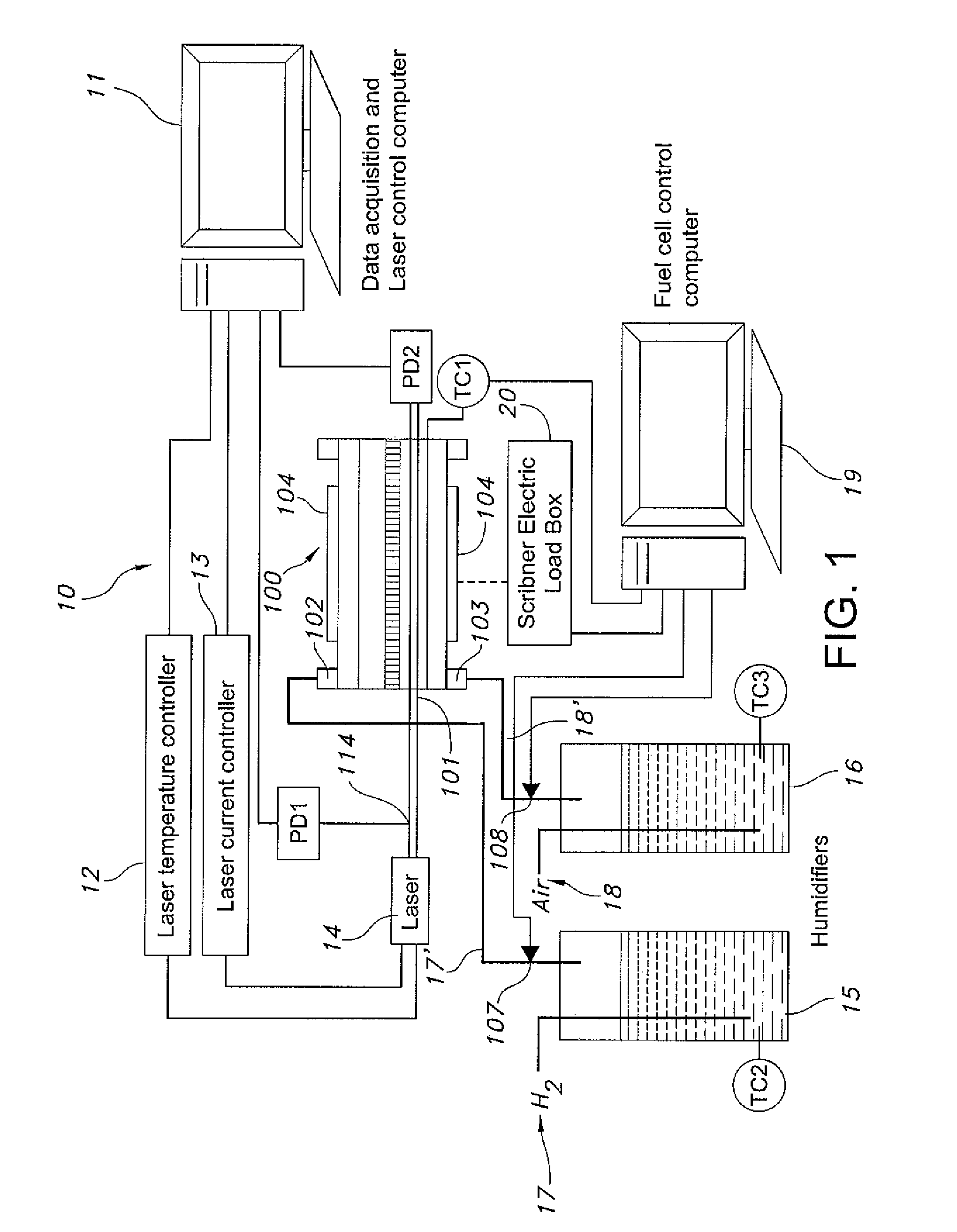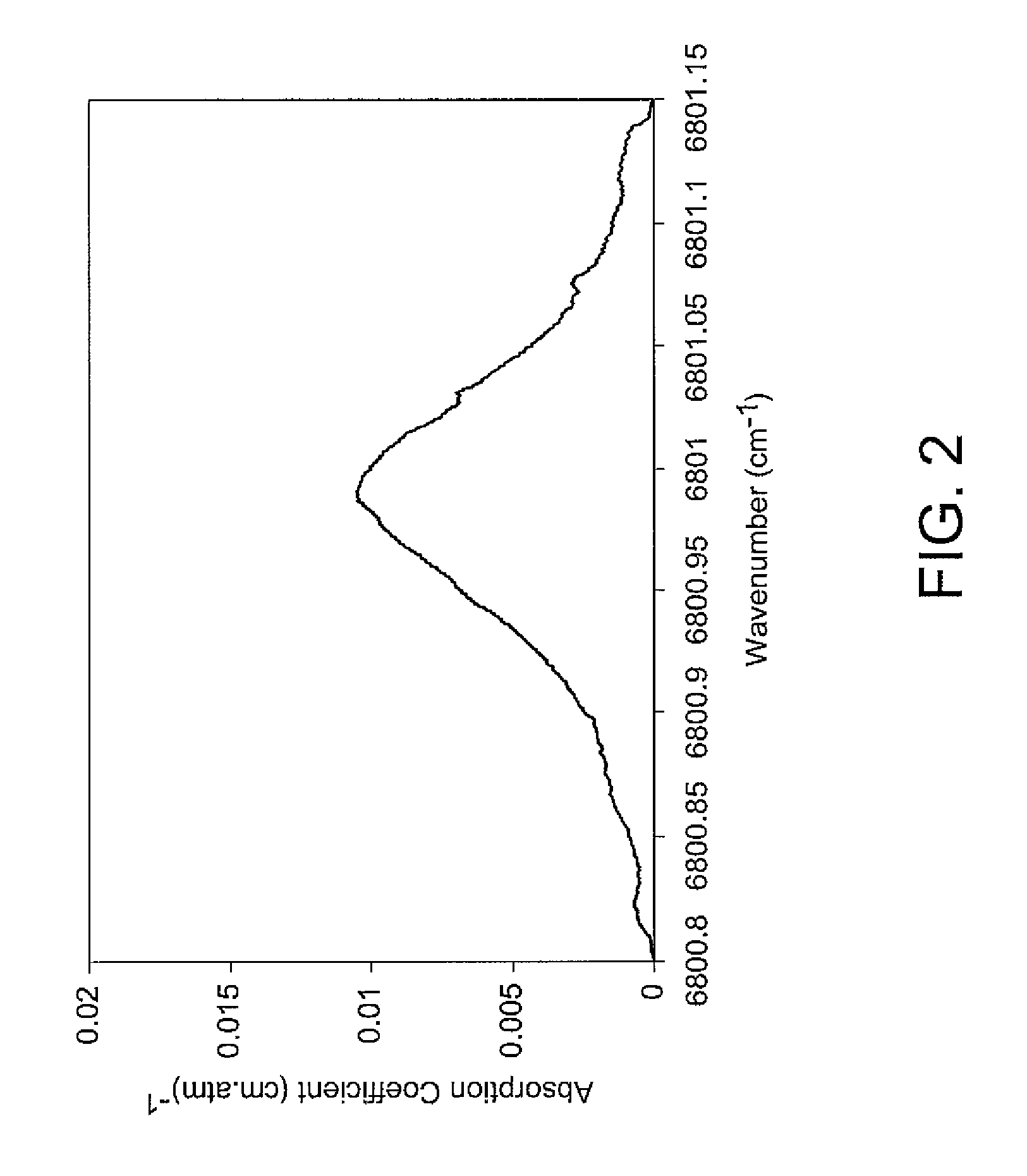Fiber optic based in-situ diagnostics for PEM fuel cells
a proton exchange membrane and fuel cell technology, applied in the direction of instruments, final product manufacturing, sustainable manufacturing/processing, etc., can solve the problems of reducing water consumption, limiting the rate of reactant transport, and fuel cell sensitive water managemen
- Summary
- Abstract
- Description
- Claims
- Application Information
AI Technical Summary
Benefits of technology
Problems solved by technology
Method used
Image
Examples
example 1
[0063]TDLAS is a particular technique effective in measuring water vapor absorption profiles as a function of excitation wavelength. However, the present disclosure describes systems and methods that differ from the prior art methodology in that, the operating temperature associated with the fuel cell is much lower than previously described temperature environments such as combustion vapor concentration measurements. Accordingly, different temperature ranges require unique laser wavelength regimes in order to accomplish effective measurements. In an exemplary embodiment, a laser and / or wavelength associated with the laser is selected to enable measurement of water transitions in a different wavelength regime.
[0064]The present disclosure provides for an exemplary system wherein a fiber pig-tailed output of a distributed feedback (DFB) diode laser (NEL # NLK1S5G1AA) at a wavelength of 1470 nm, for example, in a near-IR range is split by an optical splitter such as a 2×2 fiber splitter...
example 2
System Calibration
[0085]In an exemplary embodiment, measurements are first made in a fuel cell without external loading or hydrogen flow. This allows for calibrating measured half-widths and spectral intensities against simulated data profiles. As established from the previously described HITRAN simulation, the exemplary profiles are typically Lorentzian. In the spectral window available with an exemplary laser, about five water transitions typically contribute significantly to the overall absorption shape. Data analysis procedure consists of fitting five Lorentzian profile shapes over generated data, similar to previous curve fittings associated with a different spectral range (see, e.g., B. H. Armstrong, J. Quant. Spectrosc. Radiat. Trans., 7, (1966) 61-68).
[0086]Line central wavelengths of the five Lorentzians are taken from the HITRAN database and widths and peak intensities of about five Lorentzians are varied. In addition, a third order polynomial curve fit to a slowly varying...
example 3
Steady-State Fuel Cell Tests
[0088]In an exemplary embodiment, measurements of water partial pressure and temperature are carried out on an air (cathode) side of an exemplary fuel cell. Operating temperature of the fuel cell is varied over a range from about 60° C. to 80° C. Relative humidity of air and H2 flow streams entering cathode and anode sides of the fuel cell are also varied from about 40 to 90%. In an exemplary embodiment, air flow rate is maintained at about 1.2 lpm while that of hydrogen is fixed at about 1.0 lpm for the measurement techniques disclosed herein. External load is varied as a step function so that each load setting corresponds to a particular value of current density drawn from the cell.
[0089]Spectroscopic measurements are carried out at each value of the load after allowing the cell to reach steady-state operation. FIG. 11(a-b) illustrate water partial pressures and temperatures measured and / or equated under these conditions using calibration curves associa...
PUM
| Property | Measurement | Unit |
|---|---|---|
| wavelength | aaaaa | aaaaa |
| total absorption path length | aaaaa | aaaaa |
| temperatures | aaaaa | aaaaa |
Abstract
Description
Claims
Application Information
 Login to View More
Login to View More - R&D
- Intellectual Property
- Life Sciences
- Materials
- Tech Scout
- Unparalleled Data Quality
- Higher Quality Content
- 60% Fewer Hallucinations
Browse by: Latest US Patents, China's latest patents, Technical Efficacy Thesaurus, Application Domain, Technology Topic, Popular Technical Reports.
© 2025 PatSnap. All rights reserved.Legal|Privacy policy|Modern Slavery Act Transparency Statement|Sitemap|About US| Contact US: help@patsnap.com



